#falkirk wheel
Explore tagged Tumblr posts
Text

154 notes
·
View notes
Text
There's boat lifts, then there's boat lifts

I've never even heard of this before. The Falkirk Wheel is a rotating boat lift in Tamfourhill, Falkirk, in central Scotland, connecting the Forth and Clyde Canal with the Union Canal.
Who needs locks?
15 notes
·
View notes
Text

The Falkirk Wheel, A Rotating Boat Lift In Scotland. It Replaces The Original 11 Locks On The Forth And Clyde Canal Junction With The Union Canal
Stotallytob3r
#stotallytob3r#photographer#falkirk wheel#rotating boat life#scotland#forth and clyde canal junction#union canal#infrastructure#architecture
3 notes
·
View notes
Text
Moving Water for Water Water Everywhere #215 & Lens-Artists Challenge
Hi all 👋 Feel free to join in whenever you have a water picture to post (any type of water, in any state, will do). See below for how to join the fun 😁 This is also my post for Sofia’s Lens-Artists Challenge: Water In Motion. For this challenge of water in motion, I thought I’d look at some obvious and less obvious forms of movement. So, I’m starting this post with water that is put in motion…

View On WordPress
#falkirk wheel#Fountains#Jez Braithwaite#LAPC#LENS-ARTISTS#Lens-Artists Challenge#Loch Long#Reflections#Rivers#scotland#travel#Water#Water Water Everywhere#waves
0 notes
Note
I love the UK canal network, this is what inspired the original GM of the Titan campaigns to create the one that now criss-crosses Allansia and is such an integral part of Toreguarde life.
I didn't realise that the boats in the His Dark Materials trilogy were wider than the ones I'm familiar with, though I have seen the dutch barges puttering about in Oxford once before. That means I need to update my mental image when I get back to re-reading now.
There is one minor point to make in addition to the previous post: the creation of the Falkirk wheel. The Forth and Clyde canal is one of the stranger connections between rivers in the UK. The Clyde, which is the river that runs through Glasgow, is at a much higher elevation than the Firth of Forth; the river that has that infamous railway bridge at its estuary. Before 2002 they were connected by a long-ass series of locks that took forever and a day to get through (because you need to wait for each lock to drain/fill before moving onto the next). The history of the canal can be found on its wikipedia page, but to summarise, the canal was closed in the 60s, though parts of the Falkirk canal had already been built over by the 1930s. This changed in the late 1990s/very early 2000s when the Falkirk and Camelon community received National Lottery funding to re-open the canal and build a boat lifting system to link the Forth and Clyde canal once more. The Falkirk Wheel opened in 2002 and has been in operation since, providing short tours between the two parts of the canal.

It's an engineering masterpiece and the people who live nearby are rightly very proud of it.
The canal now links to the Kelpies site, which is now in the middle of a large and beautiful park right on the outskirts of Falkirk town centre. There are canal boat tours from the Wheel to The Kelpies and back again, which has been fantastic for the local area's tourism board.
To bring this back around to my writing, I am totally trying to think of where the dwarves and gnomes would build similar lifts along the Allansia Canal network by the time of The Ouroboros of Destiny; because you can bet there are plenty of places where the elevation changes would make such devices far more efficient than a long series of locks.
Hey bestie whats a narrow boat? I saw you tag that on something you reblogged and I'm pretty curious now!
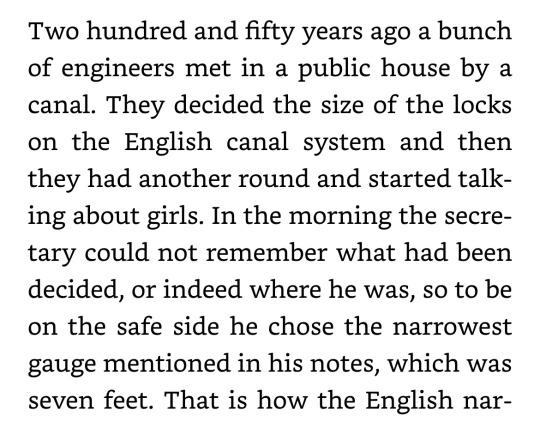


- Terry Darlington, Narrow Dog to Carcassone
A narrowboat (all one word) is a craft restricted to the British Isles, which are connected all over by a nerve-map of human-made canals. To go up and down hills, the canals are spangled with locks (chambers in which boats can be raised or lowered by filling or emptying them with water.) As Terry says above, the width of the locks was somewhat randomly determined, and as a result, the British Isles have a narrow design of lock - and a narrowboat to fit through them. A classic design was seventy feet long and six feet wide. Starting in the 18th century, and competing directly with trains, canal “barges” were an active means of transport and shipping. They were initially pulled along the towpaths by horses, and you can still see some today!
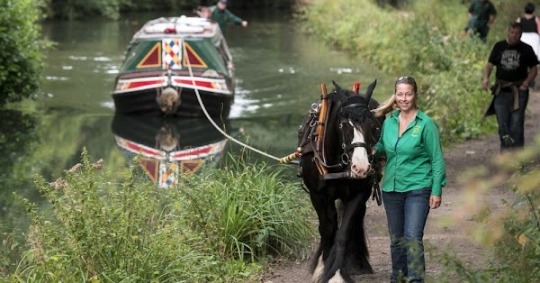
Later, engines were developed.
Even after the trains won the arms race, it was a fairly viable freight service right up until WW2. It’s slow travel, but uses few resources and requires little human power, with a fairly small crew (of women, in WW2) being capable of shifting two fully laden boats without consuming much fossil fuel.
In those times the barges were designed with small, cramped cabins in which the boaters and their families could live.
During its heyday the narrowboat community developed a style of folk art called “roses and castles” with clear links to fairground art as well as Romani caravan decor. They are historically decorated with different kinds of brass ornaments, and inside the cabins could also be distinctively painted and decorated.
Today, many narrowboats are distinctively decorated and colorful - even if not directly traditional with “roses and castles” they’ll still be bright and offbeat. A quirky name is necessary. All narrowboats, being boats, are female.
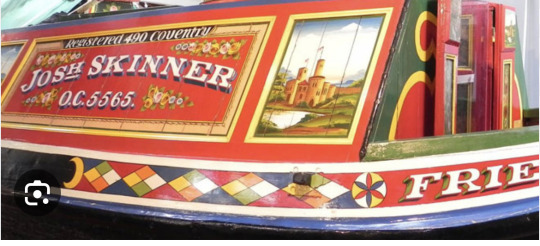

After a postwar decline, interest in the waterways was sparked by a leisure movement and collapsing canals were repaired. Today, the towpaths are a convenient walking/biking trail for people, as they connect up a lot of the mainland of the UK, hitting towns and cities. Although the restored canals are concrete-bottomed, they’re attractive to wildlife. Narrowboats from the 1970s onward started being designed for pleasure and long-term living. People enjoy vacationing by hiring a boat and visiting towns for a cuter, comfier, slower version of a campervan life. And a liveaboard community sprang up - people who live full-time on boats. Up until the very restrictive and nasty laws recently passed in the UK to make it harder for travelling peoples (these were aimed nastily at vanlivers and the Romani, and successfully hit everyone) this was one of the few legal ways remaining to be a total nomad in the UK.
Liveaboards can moor up anywhere along the canal for 28 days, but have to keep moving every 28 days. (Although sorting out the toilet and loading up with fresh water means that a lot of people move more frequently than that.) you can also live full-time in a marina if they allow it, or purchase your own mooring. In London, where canal boats are one of the few remaining cheapish ways to live, boats with moorings fetch the same prices as houses. It can be very very hard for families to balance school, parking, work, and all the difficulties of living off-grid- but many make it work. It remains a diverse community and is even growing, due to housing pressures in the UK. Boats can be very comfortable, even when only six feet wide. When faced with spending thousands of pounds on rent OR mooring up on a nice canal, you can see why it seems a romantic proposition for young people, and UK television channels always have slice-of-life documentaries about young folks fixing up their very own quirky solar-powered narrowboat. I don’t hate; I did it myself.
If you’re lucky, you might even meet some of the cool folks who run businesses from their narrowboats: canal-side walkers enjoy bookshops, vegan bakeries, ice-cream boats, restaurants, artists and crafters. There are Floating Markets and narrowboat festivals. It’s generally recognised that boaters contribute quite a lot to the canal - yet there are many tensions between different kinds of boaters (liveaboards vs leisure boaters vs tourists) as well as tensions with local settled people, towpath users like cyclists, and fishermen. I could go on and on explaining this rich culture and dramas, but I won’t.
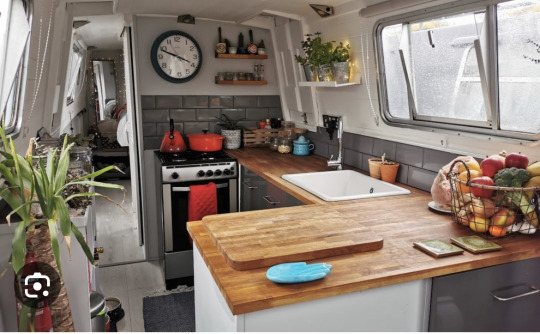
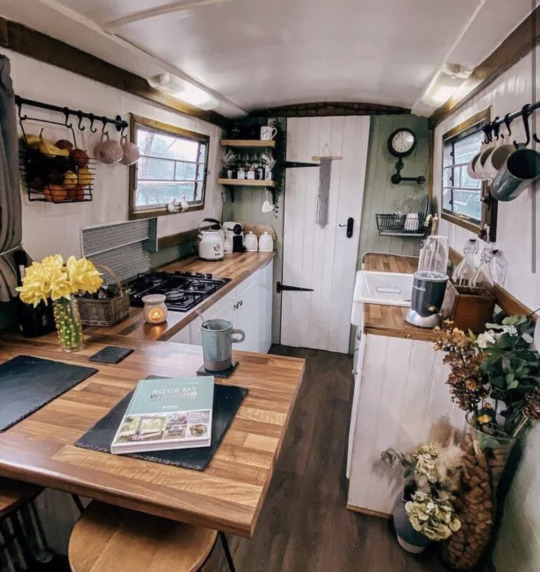
Phillip Pullman’s Gyptians are a commonly cited example of liveaboards - although they were based on the narrowboat liveaboards that Pullman knew in Oxford, their boats are actually Dutch barges. Dutch barges make good homes but are too wide to access most of the midlands and northern canals, and are usually restricted to the south of the UK. So they’re accurate for Bristol/London/Oxford, and barges are definitely comfier to film on. (Being six feet wide is definitely super awkward for a boat.) but in general Dutch barges are less common, more expensive and can’t navigate the whole system.

However, apart from them, there are few examples of narrowboat depictions that escaped containment. So it’s quite interesting that there is an entire indigenous special class of boat, distinctive and highly specialised and very cute, with an associated culture and heritage and folk art type, known to all and widely celebrated, and ABSOLUTELY UNKNOWN outside of the UK - a nation largely known around the world for inflicting its culture on others. They’re a strange, sweet little secret - and nobody who has ever loved one can resist pointing them out for the rest of their lives, or talking about them when asked to. Thank you for asking me to.
#writing adjacent-ish#titan fighting fantasy#falkirk wheel#forth and clyde canal#scottish history#uk canals
6K notes
·
View notes
Text

The Falkirk Wheel ( Falkirk Wheel - Wikipedia )
58 notes
·
View notes
Text

81 notes
·
View notes
Text


June 10th 1768 saw construction start on the Forth and Clyde canal, it was to take 22 years to complete.
The building of a canal across Scotland was first discussed during the reign of Charles II. It was not until the mid-1700s that the building of the Forth and Clyde Canal or “The Great Canal” as it was referred to then, became an actual possibility with funding being raised to carry out the work. The canal was to be built across the Central Belt of Scotland from east to west. The first spadeful was dug out in June 10th 1768 and the construction continued for 22 years including a 7 year period when no work was carried out due to lack of funds. It was the Canal Company’s policy to try to recruit locally to provide employment in the areas the canal crossed.
The work was hard and was manual labour with the use of picks and shovels to dig out heavy wet earth. Wages were about 10d (£0.04p) per day and the workers were a tough lot. Discipline was often hard to maintain and drink was cheap and plentiful causing various problems. Theft of tools and other equipment was common and often the workers were seasonal due to also working in the agricultural land surrounding the canal works. None the less the work was done and the canal was dug. Water was first let into the canal in 1773 when it was filled as far as Kirkintilloch, which increased this town’s profile with additional trades appearing in the area. It was 2 years later that the canal opened as far as Stockingfield, Maryhill. A cut was also made towards Glasgow as far as Hamiltonhill and then funds ran short and worked stopped for 7 years.
In 1784 work resumed when the Government of the time approved a loan of £50,000 to the Canal Company, the money coming from the Forfeited Estates Fund (a legacy of the Jacobite Rebellion in 1745) and this allowed the canal to reach Bowling. The Forth and Clyde Canal was opened from the Firth of Forth to the Firth of Clyde in the summer of 1790 with the first boat navigating its channel in August of that year.
The length of the Canal from eastern sea lock to the western sea lock was 35 miles. In 1791 the Glasgow Branch was extended from Hamiltonhill to Port Dundas giving it a length of 3.5 miles. There are 39 locks to navigate on the canal with 20 locks on the eastern section the firth of Forth to Wyndford and 19 on the western section from Maryhill to Bowling on the Firth of Clyde. The canal was crossed by many bascule bridges and made use of aqueducts such as the one over the Luggie at Kirkintilloch and the river Kelvin in Glasgow.
The canal served three main purposes. It allowed seagoing vessels passage from east to west or vice versa, therefore avoiding the long passage around the north of Scotland. It provided the fast movement of goods. Agricultural produce, mineral resources and locally produced goods could be transported more easily across Scotland. It also acted as a way for travellers to move across Scotland using “Swift” boats that linked to coach services.
The Forth and Clyde Canal had an active life into the years of the Second World War though by this time railways were carrying more goods around the country. Trade was slowly falling away though transits through the canal and day tripping continued. Eventually on 1 January 1963 the Forth and Clyde Canal closed to through traffic.
As part of the millennium celebrations in 2000, National Lottery funds were used to regenerate both canals. A boat lifting device, the Falkirk Wheel, was built to connect the Union and Forth & Clyde canals and once more allow boats to travel from the Clyde or Glasgow to Edinburgh, with a new canal connection to the River Carron and hence the River Forth. The Falkirk Wheel opened on 27th May 2002 and is now a tourist attraction. The Helix project, which includes the magnificent Kelpies is also part of this ongoing regeneration.
24 notes
·
View notes
Text

The Falkirk Wheel, Falkirk, Scotland
#photography#travel photography#architecture#canal#engineering#boat lift#black and white photography
50 notes
·
View notes
Text

11 notes
·
View notes
Note
Falkirk Wheel, the only rotational canal lift in the world.


And the Kelpies (and bonuses)







👀
6 notes
·
View notes
Text
Round & Round We Go -- Lens-Artists Challenge #290
Hi all 😃 My entry for this week’s challenge, set by Leya: Circular Wonders. It’s been a while since I’ve been able to join in with the LAPC; hopefully, I won’t go overboard (no promises 😉). I’m starting off with some architectural circles in Glasgow. The first is the roof of Kibble Palace, then the Templeton Building & the staircase in the Lighthouse. Continue reading Round & Round We Go —…

View On WordPress
#circles#e-bikes#falkirk wheel#favourites#Jez Braithwaite#kelpies#landscapes#LAPC#LENS-ARTISTS#lensy#Photos
0 notes









